Blog Archives
“We Ain’t Born Typical”: A Closer Look at the “Human Nature” Pushing Us to Humanicide – The Perinatal Unconscious
Apocalypse – No! Chapter Seven:
“We Ain’t Born Typical””
Apocalypse, Human Nature, and the Perinatal Imprint: “We Are a Fever … We Ain’t Born Typical”
“Perinatal” = “Surrounding Birth”
“We Are a Fever”
How are we to characterize these strangest of days and the current unprecedented global condition? As I have said, they are driven by what I call an emerging perinatal unconscious. As The Kills sang it, most aptly, “We ain’t born typical.” [Footnote 1]
Perinatal Unconscious
Why perinatal? First, let us remind ourselves that perinatal means, literally, “surrounding birth.” As a one-time university instructor of pre- and perinatal psychology and as an editor of a professional journal concerned with perinatal psychology— as well as a psychohistorian, let me explain what might be considered elements of a perinatal unconscious. [Footnote 2]
Unconscious Matrices = “Human Nature”
The elements I will describe are near universally accepted among perinatal psychologists as unconscious forces, factors, matrices that exist in us all as a result of a human birth that is unique, by comparison to all other species, in its degree of trauma and hence of its impact or imprint on what we might call—dare I say the word—our “human nature.”
These perinatal elements have come to our understanding through the efforts  of both the inner explorations of experiential pioneers into the perinatal, as well as the hard empirical work of pre- and perinatal researchers. I might also point out that I, myself, have forty years of experiential exploration into these perinatal elements, in addition to my scholarly work and research in this field. My experiences confirm, in my own mind, their absolute validity, as well as validating for myself the theoretical constructs put forth by others to describe and explain them.
of both the inner explorations of experiential pioneers into the perinatal, as well as the hard empirical work of pre- and perinatal researchers. I might also point out that I, myself, have forty years of experiential exploration into these perinatal elements, in addition to my scholarly work and research in this field. My experiences confirm, in my own mind, their absolute validity, as well as validating for myself the theoretical constructs put forth by others to describe and explain them.
Pre- and Perinatal Psychology, Experiential Voyagers
Be that as it may, these perinatal elements in the unconscious have been 
 described most thoroughly be three figures in particular: Stanislav Grof, Arthur Janov, and Lloyd deMause. It might help, also, to keep in mind that entire new fields of pre- and perinatal psychology, primal psychology, and to some extent, transpersonal psychology have grown up around the existence of
described most thoroughly be three figures in particular: Stanislav Grof, Arthur Janov, and Lloyd deMause. It might help, also, to keep in mind that entire new fields of pre- and perinatal psychology, primal psychology, and to some extent, transpersonal psychology have grown up around the existence of  these perinatal factors. Entire modalities of healing tap in to and are based on the existence of this perinatal unconscious, including primal therapy,
these perinatal factors. Entire modalities of healing tap in to and are based on the existence of this perinatal unconscious, including primal therapy, holotropic breathwork, and rebirthing, to name just the few that I happen to be trained in. These unconscious perinatal elements have, at this point, been confirmed by thousands of researchers and hundreds of thousands, if not millions, of experiential voyagers into the perinatal unconscious.
holotropic breathwork, and rebirthing, to name just the few that I happen to be trained in. These unconscious perinatal elements have, at this point, been confirmed by thousands of researchers and hundreds of thousands, if not millions, of experiential voyagers into the perinatal unconscious.
“The Perinatal Unconscious“
– audiocast by SillyMickel Adzema
For the author’s reading, with elaboration, of this chapter, click on the link to the audio site above or click the audio player here:
http://cdn.hark.com/swfs/player_fb.swf?pid=rfrhsmtjnm
Apocalypse, or New Dawn? Chapter 2: “The Perinatal Unconscious” by SillyMickel Adzema
Elements of Birth Experience
Based upon all this, then, let us look at some of the elements, in general, that characterize this perinatal unconscious.
Perinatal Matrix ~ Societal Matrix
Stanislav Grof describes basic perinatal matrices (BPMs)—in other words, typical experiential constellations related to our births. These happen to be very much akin to deMause’s perinatal schema, with some slight differences in emphasis, and more elaboration on the part of Grof. So let us use Grof’s schema as a basis. [Footnote 3]
All Needs Met . . . With Luck – Matrix 1
 Grof’s Basic Perinatal Matrix I, or BPM I, involves the experiences and feelings related to the sometimes, or at least relatively, undisturbed prenatal period. The prenatal period is that time in the womb sometimes characterized by feelings of peace, complete relaxation, and a feeling of all needs met, or “oceanic bliss.”
Grof’s Basic Perinatal Matrix I, or BPM I, involves the experiences and feelings related to the sometimes, or at least relatively, undisturbed prenatal period. The prenatal period is that time in the womb sometimes characterized by feelings of peace, complete relaxation, and a feeling of all needs met, or “oceanic bliss.”

 BPM I corresponds to deMause’s societal periods of “prosperity and progress,” which he claims are accompanied by feelings and fears of being “soft” and “feminine” — understandably here, for in BPM I, that is, prenatally, the fetus is largely identified with his or her mother and is very much “soft,” i.e., undefended.
BPM I corresponds to deMause’s societal periods of “prosperity and progress,” which he claims are accompanied by feelings and fears of being “soft” and “feminine” — understandably here, for in BPM I, that is, prenatally, the fetus is largely identified with his or her mother and is very much “soft,” i.e., undefended.
 Since the time in the womb may also be disturbed by toxic substances that the mother ingests—drugs, chemical additives, and so on—as well as by
Since the time in the womb may also be disturbed by toxic substances that the mother ingests—drugs, chemical additives, and so on—as well as by disturbing emotions that the mother experiences, which release stress hormones into the mother’s bloodstream, which then cross the placental barrier and affect the fetus, BPM I is also sometimes characterized as feelings of being surrounded by a polluted environment and being forced to ingest noxious substances, toxins, and poisons, which sickens the fetus.
disturbing emotions that the mother experiences, which release stress hormones into the mother’s bloodstream, which then cross the placental barrier and affect the fetus, BPM I is also sometimes characterized as feelings of being surrounded by a polluted environment and being forced to ingest noxious substances, toxins, and poisons, which sickens the fetus.
No-Exit Despair – Matrix 2
 In Grof’s schema, BPM I is followed by BPM II—that is, Basic Perinatal Matrix II—which are experiences and feelings related to the time of “no exit” in the womb and
In Grof’s schema, BPM I is followed by BPM II—that is, Basic Perinatal Matrix II—which are experiences and feelings related to the time of “no exit” in the womb and  claustrophobic -like feelings occurring to nearly all humans in the late stages of pregnancy and especially with the onset of labor, when the cervix is not yet dilated. Since there does not seem to be any “light at the end of the tunnel”—metaphorically speaking—it is characterized by feelings of depression, guilt, despair, and blame, and a characterization of oneself as being in the position of “the victim.”
claustrophobic -like feelings occurring to nearly all humans in the late stages of pregnancy and especially with the onset of labor, when the cervix is not yet dilated. Since there does not seem to be any “light at the end of the tunnel”—metaphorically speaking—it is characterized by feelings of depression, guilt, despair, and blame, and a characterization of oneself as being in the position of “the victim.”
It is very much like DeMause’s period of collective feelings of entrapment, strangulation, suffocation, and poisonous placenta, which he has found to precede the actual outbreak of war or other violence. [Footnote 3]
Birth Wars – Matrix 3
 This of course is followed by BPM III (Basic Perinatal Matrix III), which involves feelings and experiences of all-encompassing struggle and is related to the time of one’s actual birth. Characterized also by intense feelings of aggression and sexual excess—in the position, now, of “the aggressor”—it is related directly, in DeMause’s schema, to a time of actual war.
This of course is followed by BPM III (Basic Perinatal Matrix III), which involves feelings and experiences of all-encompassing struggle and is related to the time of one’s actual birth. Characterized also by intense feelings of aggression and sexual excess—in the position, now, of “the aggressor”—it is related directly, in DeMause’s schema, to a time of actual war.
Hallelujah! . . (I think. . . . ) – Matrix 4
Basic Perinatal Matrix IV (BPM IV) follows this; it corresponds to the time of emergence from the womb during the birth process and is characterized by feelings of victory, release, exultation.

 But also sometimes, after that initial relief of depression — when the struggle does not bring the expected rewards, as when, during modern obstetrical births, the neonate is harshly treated and then taken away from the mother, disallowing the bonding which should occur, naturally, immediately after birth.
But also sometimes, after that initial relief of depression — when the struggle does not bring the expected rewards, as when, during modern obstetrical births, the neonate is harshly treated and then taken away from the mother, disallowing the bonding which should occur, naturally, immediately after birth.
In my own experience, the exultation and relief of release was replaced suddenly by feelings of being assaulted by the attendants at my birth (which  of course they thought of as “attending” to me)
of course they thought of as “attending” to me)  as they went about roughly removing mucous from my mouth; prematurely cutting my umbilical cord to leave me struggling for breath; scrubbing, weighing, measuring, and otherwise probing me; and wrapping me like a tamale and taking me away from all I had previously known…i.e., my mother. This felt like ritual abuse to me, and I have often likened it, after the intense period of compression and crushing before birth, to a situation of “going from the frying pan into the fire.”
as they went about roughly removing mucous from my mouth; prematurely cutting my umbilical cord to leave me struggling for breath; scrubbing, weighing, measuring, and otherwise probing me; and wrapping me like a tamale and taking me away from all I had previously known…i.e., my mother. This felt like ritual abuse to me, and I have often likened it, after the intense period of compression and crushing before birth, to a situation of “going from the frying pan into the fire.”
At any rate, this experience of actual emergence or birth coincides, societally, with deMause’s period of the ending of a war.
Heaven and Hell

 In summary, we have euphoric, oceanic, blissful feelings, sometimes feelings of being poisoned or being in a toxic or polluted environment; followed by crushing, no-exit, depression, claustrophobia, compression, strangulation, suffocation, and being force-fed
In summary, we have euphoric, oceanic, blissful feelings, sometimes feelings of being poisoned or being in a toxic or polluted environment; followed by crushing, no-exit, depression, claustrophobia, compression, strangulation, suffocation, and being force-fed  by a poisonous placenta; followed by struggle, violence, war scenarios, birth/death fantasies, sexual
by a poisonous placenta; followed by struggle, violence, war scenarios, birth/death fantasies, sexual  excess; and finally release, triumph, feeling of renewal or rebirth and a new golden age, but also possibly of being abandoned, tortured, ritually sacrificed, probed medically, and assaulted by sensations. These are some of the elements that characterize the experience of the perinatal unconscious.
excess; and finally release, triumph, feeling of renewal or rebirth and a new golden age, but also possibly of being abandoned, tortured, ritually sacrificed, probed medically, and assaulted by sensations. These are some of the elements that characterize the experience of the perinatal unconscious.
For Dreaming Out Loud! Projecting the Perinatal Zeitgeist

 In the next chapter, Perinatal Media, we will take a look at how these elements have erupted into our collective dreams in recent history. By this I mean, we will see how our artists and creative people have projected them into the media, movies, and TV–in which we all participate–and how our fascination with them, because these artists are reflecting things that exist deep inside of ourselves as well, has caused them to grow, creating the dominant underlying zeitgeist of our time.
In the next chapter, Perinatal Media, we will take a look at how these elements have erupted into our collective dreams in recent history. By this I mean, we will see how our artists and creative people have projected them into the media, movies, and TV–in which we all participate–and how our fascination with them, because these artists are reflecting things that exist deep inside of ourselves as well, has caused them to grow, creating the dominant underlying zeitgeist of our time.

Continue with Apocalypse No! Chapter Eight:
The Perinatal Media
Return to Apocalypse No! Chapter Six:
Strange Days
Footnotes
1. Chapter titled with appreciation and admiration to The Kills for their recording, U R A Fever. The lyrics go, “I am a fever, you are a fever, we ain’t born typical….” and so on. The music video produced is similarly brilliant. Together, it is a production bordering on genius. The video contains levels of meaning that are only obvious on subsequent viewings. I reproduce it for the second time in this book, above in this chapter, for the convenience of the reader.
Lyrics – U.R.A. Fever – The Kills
Walk you to the counter
What do you got to offer
Pick you out a solder
Look at you foreverWalk you to the water
Your eyes like a casino
We ain’t born typicalFind a piece of silver
Pretty as a diagram
And go down to the RioPut it in my left hand
Put it in a fruit machine
Everyone’s a winner
Laughing like a seagullYou are a fever
You are a fever
You ain’t born typicalYou are a fever
You are a fever
You ain’t born typicalLiving in a suitcase
Meet a clown, fall in love
went down to have you overGoing ’round a break up
Take you to a jukebox
That’s the situation
Pick you out a number
And that’s our arrangementDancing on the legs of a new-born pony
Left right left right
Keep it up sonGo ahead and have her
Go ahead and leave her
You only ever had her
When you were a feverI am a fever
I am a fever
I ain’t born typicalI am a fever
I am a fever
I ain’t born typicalWe are a fever
We are a fever
We ain’t born typicalWe are a fever
We are a fever
We ain’t born typicalWe are a fever
We are a fever
We ain’t born typicalWe are a fever
We are a fever
We ain’t born typical
2. In the Pre- and Perinatal Psychology Newsletter I was applauded for being the first person in the United States to teach the subject of pre- and perinatal psychology at the university level and—as it was said, remarkably—for doing it while still a student. I did this at Sonoma State University, in Rohnert Park, California, in the years 1994 and 1995, beginning while I was a graduate student there.
My graduate thesis became the book, Falls From Grace: Spiritual and Philosophical Perspectives of Prenatal and Primal Experience, which is listed in Wikipedia as a reference under the topic of prenatal and perinatal psychology.
Subsequently, I became the editor of the professional journal, Primal Renaissance: The Journal of Primal Psychology, formerly published by the International Primal Association. Much of the contents of its issues were later posted to my website, Primal Spirit, where they can still be viewed.
I have had my writings published in The Journal of Psychohistory, including some that later became part of this book. In fact, I presented the material of this book originally at an Institute for Psychohistory Association convention; and its earliest publications were in The Journal of Psychohistory under the title, “”The Scenery of Healing: Commentary On DeMause’s ‘Restaging Prenatal and Birth Trauma’s in War and Social Violence’”” 23/4, 395-405.
These are among my many credentials in this field of pre- and perinatal psychology, where I have studied and trained from 1972 till this day.
3. Stanislav Grof, Realms of the Human Unconscious: Observations from LSD Research. New York: Viking Press, 1975; LSD Psychotherapy. Pomona, CA: Hunter House, 1980; Beyond the Brain: Birth, Death, and Transcendence in Psychotherapy. Albany, NY: State University of New York Press, 1985; The Adventure of Self-Discovery: Dimensions of Consciousness and New Perspectives in Psychotherapy and Inner Exploration. Albany, NY: State University of New York Press, 1988; The Holotropic Mind: The Three Levels of Human Consciousness and How They Shape Our Lives. San Francisco: HarperSanFrancisco, 1993.
4. Lloyd deMause, “Restaging Early Traumas in War and Social Violence.” The Journal of Psychohistory 23 (1995): 344-391. (Reprinted, with permission, on the Primal Spirit website as “Restaging Prenatal and Birth Traumas in War and Social Violence“)
Continue with Apocalypse No! Chapter Eight:
The Perinatal Media
Return to Apocalypse No! Chapter Six:
Strange Days
Invite you to join me on Twitter:
http://twitter.com/sillymickel
friend me on Facebook: https://www.facebook.com/sillymickel
Kaleidoscope of Postmodern Life, Part Four: Pollution and The Greenhouse Effect Pushes Up Perinatal Pulls and Political Palpitations…and Vice Versa
Air Pollution, Fetal Suffocation, and Human Nature: Profound Sculpting of Who We Are Occurs at a Time We Cannot See : 21st Century and Its Discontents, Part 4
The Perinatal Pulls of Pollution: Air Pollution and Fetal Oxygen Starvation
Increased Carbon Dioxide, But Also Decreased Oxygen

 One overlooked, but hugely pervasive perinatal element of these strange days is connected to the increasing carbon dioxide concentration in our atmosphere called “the greenhouse effect” which occurs alongside the curiously overlooked yet necessarily corresponding decreases in oxygen levels. There is increasingly less oxygen as we use it up burning carbon-based fossil fuels and making carbon dioxide. [Footnote 1]
One overlooked, but hugely pervasive perinatal element of these strange days is connected to the increasing carbon dioxide concentration in our atmosphere called “the greenhouse effect” which occurs alongside the curiously overlooked yet necessarily corresponding decreases in oxygen levels. There is increasingly less oxygen as we use it up burning carbon-based fossil fuels and making carbon dioxide. [Footnote 1]
 We have more carbon dioxide for that reason and also because we are stupidly destroying the Earth’s mechanisms for turning that carbon dioxide back into oxygen…forests and ocean plankton, for example. This increased carbon dioxide is called “the greenhouse effect.” While this has been looked at from the perspective of it creating global warming and climate change, there are even stronger corporate (profit-motivated) as well as personal psychological reasons why we do not look at its most immediate effect on humans—the amount of oxygen we get from the air we breathe.
We have more carbon dioxide for that reason and also because we are stupidly destroying the Earth’s mechanisms for turning that carbon dioxide back into oxygen…forests and ocean plankton, for example. This increased carbon dioxide is called “the greenhouse effect.” While this has been looked at from the perspective of it creating global warming and climate change, there are even stronger corporate (profit-motivated) as well as personal psychological reasons why we do not look at its most immediate effect on humans—the amount of oxygen we get from the air we breathe.  We will steal at least a brief glance into some psychological reasons now and while we are at it uncover rich veins of understanding of and possible solutions for not only our current environmental problems but certain political and social dilemmas which we will find are operating dialectically with them. For there are provocative and profound influences from our experiences in the late stages of our womb life on the kaleidoscope of our current postmodern lives.
We will steal at least a brief glance into some psychological reasons now and while we are at it uncover rich veins of understanding of and possible solutions for not only our current environmental problems but certain political and social dilemmas which we will find are operating dialectically with them. For there are provocative and profound influences from our experiences in the late stages of our womb life on the kaleidoscope of our current postmodern lives.
Air Pollution Bring Up in Us Uncomfortable Feelings From Our Births
 For the increased carbon dioxide and reduced oxygen of the globe is analogous to the situation of “fetal malnutrition,” described by Briend and DeMause, that occurs prior to birth, and which is the basis for DeMause’s explanation of poisonous placenta symbolism. Keep in mind in particular that we experience this reduction in oxygen and increase in carbon dioxide in the form of air pollution, which is most pronounced in larger cities. [Footnote 2]
For the increased carbon dioxide and reduced oxygen of the globe is analogous to the situation of “fetal malnutrition,” described by Briend and DeMause, that occurs prior to birth, and which is the basis for DeMause’s explanation of poisonous placenta symbolism. Keep in mind in particular that we experience this reduction in oxygen and increase in carbon dioxide in the form of air pollution, which is most pronounced in larger cities. [Footnote 2]
The Perinatal Pushes on Human Nature
Bipedalism Causes Birth Pain
 But let’s back up a bit and put this in context. Because humans stand upright—are bipedal—in the latest stages of gestation/pregnancy the weight of the fetus, now nearly at its largest, presses upon the arteries feeding the placenta and bringing oxygen to the unborn child. Of course this is most pronounced when the mother is standing, as the fetus weighs down upon arteries between itself and the bones of the pelvis. Reduced blood and oxygen means the fetus is not getting as much oxygen as it wants and could use. The fetus cannot gasp for breath but one can imagine it having a similar feeling…recall the sensation of holding one’s breath under water.
But let’s back up a bit and put this in context. Because humans stand upright—are bipedal—in the latest stages of gestation/pregnancy the weight of the fetus, now nearly at its largest, presses upon the arteries feeding the placenta and bringing oxygen to the unborn child. Of course this is most pronounced when the mother is standing, as the fetus weighs down upon arteries between itself and the bones of the pelvis. Reduced blood and oxygen means the fetus is not getting as much oxygen as it wants and could use. The fetus cannot gasp for breath but one can imagine it having a similar feeling…recall the sensation of holding one’s breath under water.
Birth Pain Makes Humans Out of Planetmates
 This is an uncomfortable situation for the fetus which goes on for a long time and gives rise to many of our adult feelings of claustrophobia and entrapment, depression, no-exit hopelessness.This is one of those specific birth traumas we humans have acquired because of becoming bipedal
This is an uncomfortable situation for the fetus which goes on for a long time and gives rise to many of our adult feelings of claustrophobia and entrapment, depression, no-exit hopelessness.This is one of those specific birth traumas we humans have acquired because of becoming bipedal  that other species, our planetmates, do not have. It makes us different and sets us apart from all other species in ways that are not often positive or beneficial,
that other species, our planetmates, do not have. It makes us different and sets us apart from all other species in ways that are not often positive or beneficial,  however human. It is something that is crucial to the understandings I bring forth in my book, The Great Reveal (See “Bipedalism and Birth Pain“).
however human. It is something that is crucial to the understandings I bring forth in my book, The Great Reveal (See “Bipedalism and Birth Pain“).
Four Blueprints of Human Consciousness Are Written in the Womb
Looking more closely at it, there are four major feeling constellations involved in this late gestation discomfort. They, along with other imprints from our prenatal and perinatal experiences, are integral parts of the foundation of our humanness—that part which is normally called “human nature” and is considered to have a basis that is genetic only.
These Aspects of Late Gestation Pain—Crowded, Gasping, Poisoned, Dirty —Are Important Molds For Human Nature, Which Scientists Have Heretofore Naively Labeled Genetic
 It is a joke to think that just because a trait exists in humans at the time of birth that it is rooted in our DNA alone. That thinking is as archaic as flat earth theories became after the heliocentric revolution.
It is a joke to think that just because a trait exists in humans at the time of birth that it is rooted in our DNA alone. That thinking is as archaic as flat earth theories became after the heliocentric revolution.  For there are a full nine months of individual experience prior to birth that, being the earliest influences on all experiences and perceptions after them,
For there are a full nine months of individual experience prior to birth that, being the earliest influences on all experiences and perceptions after them, are far more important in determining who we become
are far more important in determining who we become  and how we act later on than anything that happens to us after birth, even if it also occurs to us early on, as in infancy or childhood.
and how we act later on than anything that happens to us after birth, even if it also occurs to us early on, as in infancy or childhood.  It is wholesale naïve and rather quaint that esteemed scientists and intelligent lay folk would subscribe to the idea that just because one cannot see something happening with one’s eyes, it doesn’t have observable consequences. By that reasoning, we would never attribute causation to molecular events and would have no science of chemistry.
It is wholesale naïve and rather quaint that esteemed scientists and intelligent lay folk would subscribe to the idea that just because one cannot see something happening with one’s eyes, it doesn’t have observable consequences. By that reasoning, we would never attribute causation to molecular events and would have no science of chemistry.
 So, no, there are profound imprints on the way we think, view and interpret our experience, view the world,
So, no, there are profound imprints on the way we think, view and interpret our experience, view the world,  and act in relation to ourselves, others, and the world, which are stamped upon our psyche by our
and act in relation to ourselves, others, and the world, which are stamped upon our psyche by our  earliest experiences. For now let us look at the provocative and profound influences from our experiences in the late stages of our womb life. They are especially deep and far-reaching molds for all later experience because they are, in general, the most painful, uncomfortable, and overwhelming experiences we have in the entire first nine months of our physical existence.
earliest experiences. For now let us look at the provocative and profound influences from our experiences in the late stages of our womb life. They are especially deep and far-reaching molds for all later experience because they are, in general, the most painful, uncomfortable, and overwhelming experiences we have in the entire first nine months of our physical existence.
Continue with Blueprints of Human Nature and Four Earliest Roots of War, Bigotry, and Pollution: 21st Century and Its Discontents, Part 5
Return to Crushing Populations and Its Relief—Perinatal Pulls of Public Life, Sky Diving, Dancing, Swimming, and “Birth”Day Parties: 21st Century and Its Discontents, Part 3
Footnotes
1. This obvious though insistently overlooked fact has scientific support, of course:
According to a study conducted by scientists from the Scripps Institute there is less oxygen in the atmosphere today than there used to be. The ongoing study, which accumulated and interpreted data from NOAA monitoring stations all over the world, has been running from 1989 to the present. It monitored both the rise of carbon dioxide in the atmosphere and the decline in oxygen. The conclusion of that 20 year study is that, as carbon dioxide (produced primarily by burning fossil fuels) accumulates in the atmosphere, available oxygen is decreasing.
Carbon dioxide seems to be almost the total focus of attention in the climate change model as it exists today. After reviewing the results of this study and talking with Dr. Ralph Keeling (one of the lead scientists on the study), it seemed to me that the consequences of atmospheric oxygen depletion should be included in any discussion of atmospheric change….
Read more: “Atmospheric Oxygen Levels Fall as Carbon Dioxide Rises” http://blogcritics.org/scitech/article/atmospheric-oxygen-levels-fall-as-carbon/#ixzz1ru2460V8
2. A. Briend, “Fetal Malnutrition: The Price of Upright Posture?” British Medical Journal 2 (1979): 317-319. [return to text]
Continue with Blueprints of Human Nature and Four Earliest Roots of War, Bigotry, and Pollution: 21st Century and Its Discontents, Part 5
Return to Crushing Populations and Its Relief—Perinatal Pulls of Public Life, Sky Diving, Dancing, Swimming, and “Birth”Day Parties: 21st Century and Its Discontents, Part 3
Invite you to join me on Twitter:
http://twitter.com/sillymickel
friend me on Facebook: https://www.facebook.com/sillymickel
“We Ain’t Born Typical”: A Closer Look at the “Human Nature” Pushing Us to Humanicide – The Perinatal Unconscious
“We Are a Fever…We Ain’t Born Typical”: Apocalypse and the Perinatal Unconscious
“Perinatal” = “Surrounding Birth”
“We Are a Fever”
How are we to characterize these strangest of days and the current unprecedented global condition? As I have said, they are driven by what I call an emerging perinatal unconscious. As The Kills sang it, most aptly, “We ain’t born typical.” [Footnote 1]
Perinatal unconscious
Why perinatal? First, let us remind ourselves that perinatal means, literally, “surrounding birth.” As a one-time college instructor of pre- and perinatal psychology and as an editor of a professional journal concerned with perinatal psychology— as well as a psychohistorian, let me explain what might be considered elements of a perinatal unconscious. [Footnote 2]
Unconscious Matrices = “Human Nature”
The elements I will describe are near universally accepted among perinatal psychologists as unconscious forces, factors, matrices that exist in us all as a result of a human birth that is unique, by comparison to all other species, in its degree of trauma and hence of its impact or imprint on what we might call—dare I say the word—our “human nature.”
These perinatal elements have come to our understanding through the efforts of both the inner explorations of experiential pioneers into the perinatal, as  well as the hard empirical work of pre- and perinatal researchers. I might also point out that I, myself, have nearly forty years of experiential exploration into these perinatal elements. My experiences confirm, in my own mind, their absolute validity, as well as validating for myself the theoretical constructs put forth by others to describe and explain them.
well as the hard empirical work of pre- and perinatal researchers. I might also point out that I, myself, have nearly forty years of experiential exploration into these perinatal elements. My experiences confirm, in my own mind, their absolute validity, as well as validating for myself the theoretical constructs put forth by others to describe and explain them.
Pre- and Perinatal Psychology, Experiential Voyagers
Be that as it may, these perinatal elements in the unconscious have been described most thoroughly be three figures in particular: Stanislav Grof, Arthur Janov, and Lloyd deMause.  It might help, also, to keep in mind that entire new fields of pre- and perinatal psychology, primal psychology, and to some extent, transpersonal psychology have grown up around the existence of these perinatal factors. These unconscious perinatal elements have, at this point, been confirmed by thousands of researchers and hundreds of thousands, if not millions, of experiential voyagers into the perinatal unconscious.
It might help, also, to keep in mind that entire new fields of pre- and perinatal psychology, primal psychology, and to some extent, transpersonal psychology have grown up around the existence of these perinatal factors. These unconscious perinatal elements have, at this point, been confirmed by thousands of researchers and hundreds of thousands, if not millions, of experiential voyagers into the perinatal unconscious.
“The Perinatal Unconscious“
– audiocast by SillyMickel Adzema
For the author’s reading, with elaboration, of this chapter, click on the link to the audio site above or click the audio player here:
http://cdn.hark.com/swfs/player_fb.swf?pid=rfrhsmtjnm
Apocalypse, or New Dawn? Chapter 2: “The Perinatal Unconscious” by SillyMickel Adzema
Elements of Birth Experience
Based upon all this, then, let us look at some of the elements, in general, that characterize this perinatal unconscious.
Perinatal Matrix ~ Societal Matrix
Stanislav Grof describes basic perinatal matrices (BPMs)—in other words, typical experiential constellations related to our births. These happen to be very much akin to DeMause’s perinatal schema, with some slight differences in emphasis, and more elaboration on the part of Grof. So let us use Grof’s schema as a basis. [Footnote 3]
All Needs Met . . . with luck – Matrix 1
Grof’s Basic Perinatal Matrix I, or BPM I, involves the experiences and feelings related to the sometimes, or at least relatively, undisturbed prenatal period. The prenatal period is that time in the womb sometimes characterized by feelings of peace, complete relaxation, and a feeling of all needs met, or “oceanic bliss.”
BPM I corresponds to deMause’s societal periods of “prosperity and progress,” which he claims are accompanied by feelings and fears of being “soft” and “feminine”—understandably here,  for in BPM I, that is, prenatally, the fetus is largely identified with his or her mother and is very much “soft,” i.e., undefended.
for in BPM I, that is, prenatally, the fetus is largely identified with his or her mother and is very much “soft,” i.e., undefended.
Since the time in the womb may also be disturbed by toxic substances that the mother ingests—drugs, chemical additives, and so on—as well as by disturbing emotions that the mother experiences, which release stress hormones into the mother’s bloodstream, which then cross the placental barrier and affect the fetus, BPM I is also sometimes characterized as feelings of being surrounded by a polluted environment and being forced to ingest noxious substances, toxins, and poisons, which sickens the fetus.
No-Exit Despair – Matrix 2
 In Grof’s schema, BPM I is followed by BPM II—that is, Basic Perinatal Matrix II—which are experiences and feelings related to the time of “no exit” in the womb and claustrophobic-like feelings occurring to nearly all humans in the late stages of pregnancy and especially with the onset of labor, when the cervix is not yet dilated. Since there does not seem to be any “light at the end of the tunnel”—metaphorically speaking—it is characterized by feelings of depression, guilt, despair, and blame, and a characterization of oneself as being in the position of “the victim.”
In Grof’s schema, BPM I is followed by BPM II—that is, Basic Perinatal Matrix II—which are experiences and feelings related to the time of “no exit” in the womb and claustrophobic-like feelings occurring to nearly all humans in the late stages of pregnancy and especially with the onset of labor, when the cervix is not yet dilated. Since there does not seem to be any “light at the end of the tunnel”—metaphorically speaking—it is characterized by feelings of depression, guilt, despair, and blame, and a characterization of oneself as being in the position of “the victim.”
It is very much like DeMause’s period of collective feelings of entrapment, strangulation, suffocation, and poisonous placenta, which he has found to precede the actual outbreak of war or other violence. [Footnote 3]
Birth Wars – Matrix 3
 This of course is followed by BPM III (Basic Perinatal Matrix III), which involves feelings and experiences of all-encompassing struggle and is related to the time of one’s actual birth. Characterized also by intense feelings of aggression and sexual excess—in the position, now, of “the aggressor”—it is related directly, in DeMause’s schema, to a time of actual war.
This of course is followed by BPM III (Basic Perinatal Matrix III), which involves feelings and experiences of all-encompassing struggle and is related to the time of one’s actual birth. Characterized also by intense feelings of aggression and sexual excess—in the position, now, of “the aggressor”—it is related directly, in DeMause’s schema, to a time of actual war.
Hallelujah! . . (I think. . . . ) – Matrix 4
Basic Perinatal Matrix IV (BPM IV) follows this; it corresponds to the time of emergence from the womb during the birth process and is characterized by feelings of victory, release, exultation.
But also sometimes, after that initial relief of depression—when the struggle does not bring the expected rewards, as when, during modern obstetrical births,  the neonate is harshly treated and then taken away from the mother, disallowing the bonding which should occur, naturally, immediately after birth.
the neonate is harshly treated and then taken away from the mother, disallowing the bonding which should occur, naturally, immediately after birth.
In my own experience, the exultation and relief of release was replaced suddenly by feelings of being assaulted by the attendants at my birth (which of course they thought of as “attending” to me)  as they went about roughly removing mucous from my mouth; prematurely cutting my umbilical cord to leave me struggling for breath; scrubbing, weighing, measuring, and otherwise probing me; and wrapping me like a tamale and taking me away from all I had previously known…i.e., my mother. This felt like ritual abuse to me, and I have often likened it, after the intense period of compression and crushing before birth, to a situation of “going from the frying pan into the fire.”
as they went about roughly removing mucous from my mouth; prematurely cutting my umbilical cord to leave me struggling for breath; scrubbing, weighing, measuring, and otherwise probing me; and wrapping me like a tamale and taking me away from all I had previously known…i.e., my mother. This felt like ritual abuse to me, and I have often likened it, after the intense period of compression and crushing before birth, to a situation of “going from the frying pan into the fire.”
At any rate, this experience of actual emergence or birth coincides, societally, with DeMause’s period of the ending of a war.
Heaven and Hell
 In summary, we have euphoric, oceanic, blissful feelings, sometimes feelings of being poisoned or being in a toxic or polluted environment; followed by crushing, no-exit, depression, claustrophobia, compression, strangulation, suffocation, and being force-fed by a poisonous placenta; followed by struggle, violence, war scenarios, birth/death fantasies, sexual
In summary, we have euphoric, oceanic, blissful feelings, sometimes feelings of being poisoned or being in a toxic or polluted environment; followed by crushing, no-exit, depression, claustrophobia, compression, strangulation, suffocation, and being force-fed by a poisonous placenta; followed by struggle, violence, war scenarios, birth/death fantasies, sexual  excess;
excess; and finally release, triumph, feeling of renewal or rebirth and a new golden age, but also possibly of being abandoned, tortured, ritually sacrificed, probed medically, and assaulted by sensations. These are some of the elements that characterize the experience of the perinatal unconscious.
and finally release, triumph, feeling of renewal or rebirth and a new golden age, but also possibly of being abandoned, tortured, ritually sacrificed, probed medically, and assaulted by sensations. These are some of the elements that characterize the experience of the perinatal unconscious.
For Dreaming Out Loud!

 In the next chapter we will take a look at how these elements have erupted into our collective dreams in recent history. By this I mean, we will see how our artists and creative people have projected them into the media, movies, and TV–in which we all participate–and how our fascination with them, because these artists are reflecting things that exist deep inside of ourselves as well, has caused them to grow, creating the dominant underlying mythos of our time.
In the next chapter we will take a look at how these elements have erupted into our collective dreams in recent history. By this I mean, we will see how our artists and creative people have projected them into the media, movies, and TV–in which we all participate–and how our fascination with them, because these artists are reflecting things that exist deep inside of ourselves as well, has caused them to grow, creating the dominant underlying mythos of our time.

Continue with ET, Phone Mom – Of Aliens, Toothy Vaginas, Satanic Cults, and Explosions: Everything You Always Wanted to Know About Being Born
Return to Facing Foursquare the Darkness – Not for Cowardly or Uncaring Humans: Strange Days, Pt 3
Footnotes
1. Chapter titled with appreciation and admiration to The Kills for their recording, U R A Fever. The lyrics go, “I am a fever, you are a fever, we ain’t born typical….” and so on. The music video produced is similarly brilliant. Together, it is a production bordering on genius. The video contains levels of meaning that are only obvious on subsequent viewings. I reproduce it for the second time in this series, above in this part, for the convenience of the reader.
Lyrics – U.R.A. Fever – The Kills
Walk you to the counter
What do you got to offer
Pick you out a solder
Look at you foreverWalk you to the water
Your eyes like a casino
We ain’t born typicalFind a piece of silver
Pretty as a diagram
And go down to the RioPut it in my left hand
Put it in a fruit machine
Everyone’s a winner
Laughing like a seagullYou are a fever
You are a fever
You ain’t born typicalYou are a fever
You are a fever
You ain’t born typicalLiving in a suitcase
Meet a clown, fall in love
went down to have you overGoing ’round a break up
Take you to a jukebox
That’s the situation
Pick you out a number
And that’s our arrangementDancing on the legs of a new-born pony
Left right left right
Keep it up sonGo ahead and have her
Go ahead and leave her
You only ever had her
When you were a feverI am a fever
I am a fever
I ain’t born typicalI am a fever
I am a fever
I ain’t born typicalWe are a fever
We are a fever
We ain’t born typicalWe are a fever
We are a fever
We ain’t born typicalWe are a fever
We are a fever
We ain’t born typicalWe are a fever
We are a fever
We ain’t born typical
2. In the Pre- and Perinatal Psychology Newsletter I was applauded for being the first person in the United States to teach the subject of pre- and perinatal psychology at the university level and—as it was said, remarkably—for doing it while still a student. I did this at Sonoma State University, in Rohnert Park, California, in the years 1994 and 1995, beginning while I was still a graduate student.
Subsequently, I became the editor of the professional journal, Primal Renaissance: The Journal of Primal Psychology, formerly published by the International Primal Association. Much of the contents of its issues were later posted to my website, Primal Spirit, where they can still be viewed.
I have had my writings published in The Journal of Psychohistory, including some that later became part of this book. In fact, I presented the material of this book originally at an Institute for Psychohistory Association convention; and its earliest publications were in The Journal of Psychohistory under the title, “”The Scenery of Healing: Commentary On DeMause’s ‘Restaging Prenatal and Birth Trauma’s in War and Social Violence’”” 23/4, 395-405.
These are among my many credentials in this field, where I have studied and trained from 1972 till this day. [return to text]
3. Stanislav Grof, Realms of the Human Unconscious: Observations from LSD Research. New York: Viking Press, 1975; LSD Psychotherapy. Pomona, CA: Hunter House, 1980; Beyond the Brain: Birth, Death, and Transcendence in Psychotherapy. Albany, NY: State University of New York Press, 1985; The Adventure of Self-Discovery: Dimensions of Consciousness and New Perspectives in Psychotherapy and Inner Exploration. Albany, NY: State University of New York Press, 1988; The Holotropic Mind: The Three Levels of Human Consciousness and How They Shape Our Lives. San Francisco: HarperSanFrancisco, 1993. [return to text]
4. Lloyd deMause, “Restaging Early Traumas in War and Social Violence.” The Journal of Psychohistory 23 (1995): 344-391. (Reprinted, with permission, on the Primal Spirit website as “Restaging Prenatal and Birth Traumas in War and Social Violence“) [return to text]
Continue with ET, Phone Mom – Of Aliens, Toothy Vaginas, Satanic Cults, and Explosions: Everything You Always Wanted to Know About Being Born
Return to Facing Foursquare the Darkness – Not for Cowardly or Uncaring Humans: Strange Days, Pt 3
Invite you to join me on Twitter:
http://twitter.com/sillymickel
friend me on Facebook: https://www.facebook.com/sillymickel
Birth Experience, Heaven and Hell – Experiential Voyages
Apocalypse – No! Chapter Seven:
“We Ain’t Born Typical””
We Are a Fever
Surrounding Birth
How are we to characterize these strangest of days and the current unprecedented global condition? As I have said, they are driven by what I call an emerging perinatal unconscious. As The Kills sang it, most aptly, “We ain’t born typical.” [Footnote 1]
Perinatal unconscious
Why perinatal? First, let us remind ourselves that perinatal means, literally, “surrounding birth.” As a one-time college instructor of pre- and perinatal psychology and as an editor of a professional journal concerned with perinatal psychology— as well as a psychohistorian, let me explain what might be considered elements of a perinatal unconscious. [Footnote 2]
Unconscious matrices = “human nature”
 The elements I will describe are near universally accepted among perinatal psychologists as unconscious forces, factors, matrices that exist in us all as a result of a human birth that is unique, by comparison to all other species, in its degree of trauma and hence of its impact or imprint on what we might call—dare I say the word—our “human nature.”
The elements I will describe are near universally accepted among perinatal psychologists as unconscious forces, factors, matrices that exist in us all as a result of a human birth that is unique, by comparison to all other species, in its degree of trauma and hence of its impact or imprint on what we might call—dare I say the word—our “human nature.”
These perinatal elements have come to our understanding through the efforts of both the inner explorations of experiential pioneers into the perinatal, as well as the hard empirical work of pre- and perinatal researchers. I might also point out that I, myself, have nearly forty years of experiential exploration into these perinatal elements. My experiences confirm, in my own mind, their absolute validity, as well as validating for myself the theoretical constructs put forth by others to describe and explain them.
Pre- and perinatal psychology, experiential voyagers
Be that as it may, these perinatal elements in the unconscious have been described most thoroughly be three figures in particular: Stanislav Grof, Arthur Janov, and Lloyd deMause.  It might help, also, to keep in mind that entire new fields of pre- and perinatal psychology, primal psychology, and to some extent, transpersonal psychology have grown up around the existence of these perinatal factors. These unconscious perinatal elements have, at this point, been confirmed by thousands of researchers and hundreds of thousands, if not millions, of experiential voyagers into the perinatal unconscious.
It might help, also, to keep in mind that entire new fields of pre- and perinatal psychology, primal psychology, and to some extent, transpersonal psychology have grown up around the existence of these perinatal factors. These unconscious perinatal elements have, at this point, been confirmed by thousands of researchers and hundreds of thousands, if not millions, of experiential voyagers into the perinatal unconscious.
“The Perinatal Unconscious”
– audiocast by SillyMickel Adzema
For the author’s reading, with elaboration, of this chapter, click on the link to the audio site above or click the audio player here:
Image of Apocalypse, or New Dawn? Chapter 2: “The Perinatal Unconscious” by SillyMickel Adzema
Elements of Birth Experience
Based upon all this, then, let us look at some of the elements, in general, that characterize this perinatal unconscious.
Perinatal Matrix ~ Societal Matrix
Stanislav Grof describes basic perinatal matrices (BPMs)—in other words, typical experiential constellations related to our births. These happen to be very much akin to deMause’s perinatal schema, with some slight differences in emphasis, and more elaboration on the part of Grof. So let us use Grof’s schema as a basis. [Footnote 3]
 All Needs Met . . . with luck – Matrix 1
All Needs Met . . . with luck – Matrix 1
Grof’s Basic Perinatal Matrix I, or BPM I, involves the experiences and feelings related to the sometimes, or at least relatively, undisturbed prenatal period. The prenatal period is that time in the womb sometimes characterized by feelings of peace, complete relaxation, and a feeling of all needs met, or “oceanic bliss.”
BPM I corresponds to deMause’s societal periods of “prosperity and progress,” which he claims are accompanied by feelings and fears of being “soft” and “feminine”—understandably here,  for in BPM I, that is, prenatally, the fetus is largely identified with his or her mother and is very much “soft,” i.e., undefended.
for in BPM I, that is, prenatally, the fetus is largely identified with his or her mother and is very much “soft,” i.e., undefended.
Since the time in the womb may also be disturbed by toxic substances that the mother ingests—drugs, chemical additives, and so on—as well as by disturbing emotions that the mother experiences, which release stress hormones into the mother’s bloodstream, which then cross the placental barrier and affect the fetus, BPM I is also sometimes characterized as feelings of being surrounded by a polluted environment and being forced to ingest noxious substances, toxins, and poisons, which sickens the fetus.
 No-Exit Despair – Matrix 2
No-Exit Despair – Matrix 2
In Grof’s schema, BPM I is followed by BPM II—that is, Basic Perinatal Matrix II—which are experiences and feelings related to the time of “no exit” in the womb and claustrophobic-like feelings occurring to nearly all humans in the late stages of pregnancy and especially with the onset of labor, when the cervix is not yet dilated. Since there does not seem to be any “light at the end of the tunnel”—metaphorically speaking—it is characterized by feelings of depression,  guilt, despair, and blame, and a characterization of oneself as being in the position of “the victim.”
guilt, despair, and blame, and a characterization of oneself as being in the position of “the victim.”
It is very much like deMause’s period of collective feelings of entrapment, strangulation, suffocation, and poisonous placenta, which he has found to precede the actual outbreak of war or other violence. [Footnote 3]
Birth Wars – Matrix 3
 This of course is followed by BPM III (Basic Perinatal Matrix III), which involves feelings and experiences of all-encompassing struggle and is related to the time of one’s actual birth. Characterized also by intense feelings of aggression and sexual excess—in the position, now, of “the aggressor”—it is related directly, in deMause’s schema, to a time of actual war.
This of course is followed by BPM III (Basic Perinatal Matrix III), which involves feelings and experiences of all-encompassing struggle and is related to the time of one’s actual birth. Characterized also by intense feelings of aggression and sexual excess—in the position, now, of “the aggressor”—it is related directly, in deMause’s schema, to a time of actual war.
Hallelujah! . . (I think. . . . ) – Matrix 4
Basic Perinatal Matrix IV (BPM IV) follows this; it corresponds to the time of emergence from the womb during the birth process and is characterized by feelings of victory, release, exultation.
But also sometimes, after that initial relief of depression—when the struggle does not bring the expected rewards, as when, during modern obstetrical births, the neonate is harshly treated and then taken away from the mother, disallowing the bonding which should occur, naturally, immediately after birth.
 In my own experience, the exultation and relief of release was replaced suddenly by feelings of being assaulted by the attendants at my birth (which of course they thought of as “attending” to me) as they went about roughly removing mucous from my mouth; prematurely cutting my umbilical cord to leave me struggling for breath; scrubbing, weighing, measuring, and otherwise probing me; and wrapping me like a tamale and taking me away from all I had previously known…i.e., my mother. This felt like ritual abuse to me, and I have often likened it, after the intense period of compression and crushing before birth, to a situation of “going from the frying pan into the fire.”
In my own experience, the exultation and relief of release was replaced suddenly by feelings of being assaulted by the attendants at my birth (which of course they thought of as “attending” to me) as they went about roughly removing mucous from my mouth; prematurely cutting my umbilical cord to leave me struggling for breath; scrubbing, weighing, measuring, and otherwise probing me; and wrapping me like a tamale and taking me away from all I had previously known…i.e., my mother. This felt like ritual abuse to me, and I have often likened it, after the intense period of compression and crushing before birth, to a situation of “going from the frying pan into the fire.”
At any rate, this experience of actual emergence or birth coincides, societally, with deMause’s period of the ending of a war.
Heaven and Hell
 In summary, we have euphoric, oceanic, blissful feelings, sometimes feelings of being poisoned or being in a toxic or polluted environment; followed by crushing, no-exit, depression, claustrophobia, compression, strangulation, suffocation, and being force-fed by a poisonous placenta; followed by struggle, violence, war scenarios, birth/death fantasies, sexual excess; and finally release, triumph, feeling of renewal or rebirth and a new golden age, but also possibly of being abandoned, tortured, ritually sacrificed, probed medically, and assaulted by sensations. These are some of the elements that characterize the experience of the perinatal unconscious.
In summary, we have euphoric, oceanic, blissful feelings, sometimes feelings of being poisoned or being in a toxic or polluted environment; followed by crushing, no-exit, depression, claustrophobia, compression, strangulation, suffocation, and being force-fed by a poisonous placenta; followed by struggle, violence, war scenarios, birth/death fantasies, sexual excess; and finally release, triumph, feeling of renewal or rebirth and a new golden age, but also possibly of being abandoned, tortured, ritually sacrificed, probed medically, and assaulted by sensations. These are some of the elements that characterize the experience of the perinatal unconscious.
For Dreaming Out Loud!
In the next chapter we will take a look at how these elements have erupted into our collective dreams in recent history. By this I mean, we will see how our artists and creative people have projected them into the media, movies, and TV–in which we all participate–and how our fascination with them, because these artists are reflecting things that exist deep inside of ourselves as well, has caused them to grow, creating the dominant underlying mythos of our time.
Continue on this site with
Apocalypse – No! Chapter Eight:
The Perinatal Media
 Footnotes
Footnotes
1. Chapter titled with appreciation and admiration to The Kills for their recording, U R A Fever. The lyrics go, “I am a fever, you are a fever, we ain’t born typical….” and so on. The music video produced is similarly brilliant. Together, it is a production bordering on genius. The video contains levels of meaning that are only obvious on subsequent viewings. I reproduce it for the second time in this series, above in this part, for the convenience of the reader.
Lyrics – U.R.A. Fever – The Kills
Walk you to the counter
What do you got to offer
Pick you out a solder
Look at you forever
Walk you to the water
Your eyes like a casino
We ain’t born typical
Find a piece of silver
Pretty as a diagram
And go down to the Rio
Put it in my left hand
Put it in a fruit machine
Everyone’s a winner
Laughing like a seagull
You are a fever
You are a fever
You ain’t born typical
You are a fever
You are a fever
You ain’t born typical
Living in a suitcase
Meet a clown, fall in love
went down to have you over
Going ’round a break up
Take you to a jukebox
That’s the situation
Pick you out a number
And that’s our arrangement
Dancing on the legs of a new-born pony
Left right left right
Keep it up son
Go ahead and have her
Go ahead and leave her
You only ever had her
When you were a fever
I am a fever
I am a fever
I ain’t born typical
I am a fever
I am a fever
I ain’t born typical
We are a fever
We are a fever
We ain’t born typical
We are a fever
We are a fever
We ain’t born typical
We are a fever
We are a fever
We ain’t born typical
We are a fever
We are a fever
We ain’t born typical
2. In the Pre- and Perinatal Psychology Newsletter I was applauded for being the first person in the United States to teach the subject of pre- and perinatal psychology at the university level and—as it was said, remarkably—for doing it while still a student. I did this at Sonoma State University, in Rohnert Park, California, in the years 1994 and 1995, beginning while I was still a graduate student.
Subsequently, I became the editor of the professional journal, Primal Renaissance: The Journal of Primal Psychology, formerly published by the International Primal Association. Much of the contents of its issues were later posted to my website, Primal Spirit, where they can still be viewed.
I have had my writings published in The Journal of Psychohistory, including some that later became part of this book. In fact, I presented the material of this book originally at an Institute for Psychohistory Association convention; and its earliest publications were in The Journal of Psychohistory under the titles, “”The Scenery of Healing: Commentary On DeMause’s ‘Restaging Prenatal and Birth Trauma’s in War and Social Violence'”” 23/4, 395-405.
These are among my many credentials in this field, where I have studied and trained from 1972 till this day. [return to text]
3. Stanislav Grof, Realms of the Human Unconscious: Observations from LSD Research. New York: Viking Press, 1975; LSD Psychotherapy. Pomona, CA: Hunter House, 1980; Beyond the Brain: Birth, Death, and Transcendence in Psychotherapy. Albany, NY: State University of New York Press, 1985; The Adventure of Self-Discovery: Dimensions of Consciousness and New Perspectives in Psychotherapy and Inner Exploration. Albany, NY: State University of New York Press, 1988; The Holotropic Mind: The Three Levels of Human Consciousness and How They Shape Our Lives. San Francisco: HarperSanFrancisco, 1993. [return to text]
4. Lloyd deMause, “Restaging Early Traumas in War and Social Violence.” The Journal of Psychohistory 23 (1995): 344-391. (Reprinted, with permission, on the Primal Spirit website as “Restaging Prenatal and Birth Traumas in War and Social Violence“) [return to text]
Copyright © 1999, 2011 by Michael Derzak Adzema
Continue on this site with
Apocalypse – No! Chapter Eight:
The Perinatal Media
Invite you to follow me on Twitter:
http://twitter.com/sillymickel
Facebook: https://www.facebook.com/sillymickel


























































































































![100604-hitler-020_thumb[1] 100604-hitler-020_thumb[1]](https://apocalypseknow.files.wordpress.com/2012/07/100604-hitler-020_thumb1_thumb.jpg?w=628&h=501)
![rock concert_thumb[2] rock concert_thumb[2]](https://apocalypseknow.files.wordpress.com/2012/07/rock-concert_thumb2_thumb.jpg?w=632&h=433)
![clip_image008[1] clip_image008[1]](https://apocalypseknow.files.wordpress.com/2012/07/clip_image00811.jpg?w=621&h=225)
![clip_image009[1] clip_image009[1]](https://apocalypseknow.files.wordpress.com/2012/07/clip_image00911.jpg?w=301&h=201)
![clip_image011[2] clip_image011[2]](https://apocalypseknow.files.wordpress.com/2012/07/clip_image0112.jpg?w=336&h=289)
![clip_image013_thumb[3] clip_image013_thumb[3]](https://apocalypseknow.files.wordpress.com/2012/07/clip_image013_thumb3_thumb.jpg?w=237&h=339)






![goths_thumb[2] goths_thumb[2]](https://apocalypseknow.files.wordpress.com/2012/07/goths_thumb2_thumb.jpg?w=644&h=487)
![The Wall Movie 1982 (3)_thumb[2] The Wall Movie 1982 (3)_thumb[2]](https://apocalypseknow.files.wordpress.com/2012/07/the-wall-movie-1982-3_thumb2_thumb.jpg?w=634&h=417)



![PercyJackson_Characters_thumb[2] PercyJackson_Characters_thumb[2]](https://apocalypseknow.files.wordpress.com/2012/07/percyjackson_characters_thumb2_thumb.png?w=637&h=637)
![clip_image019[1] clip_image019[1]](https://apocalypseknow.files.wordpress.com/2012/07/clip_image0191.jpg?w=375&h=248)
![world-peace-090420e_thumb[1] world-peace-090420e_thumb[1]](https://apocalypseknow.files.wordpress.com/2012/07/world-peace-090420e_thumb1_thumb.jpg?w=526&h=526)







































































![praying-with-open-hands2_thumb[3] praying-with-open-hands2_thumb[3]](https://apocalypseknow.files.wordpress.com/2012/04/praying-with-open-hands2_thumb3_thumb.jpg?w=451&h=347)




































































































 The rock groups and their lyrics themselves are often blatantly perinatal. The most obvious example of this was the group, Nirvana, who came out with a CD titled “In Utero.” The fact that the leader of the group, Kurt Cobain, committed suicide is a strong indication of his closeness and access to his perinatal trauma…as I will soon explain.
The rock groups and their lyrics themselves are often blatantly perinatal. The most obvious example of this was the group, Nirvana, who came out with a CD titled “In Utero.” The fact that the leader of the group, Kurt Cobain, committed suicide is a strong indication of his closeness and access to his perinatal trauma…as I will soon explain. 

























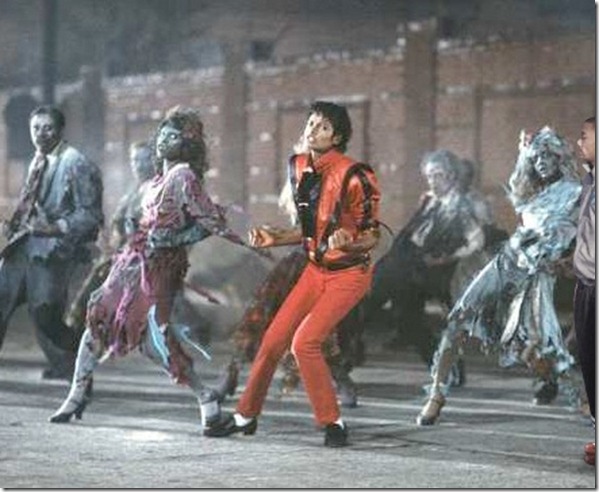

























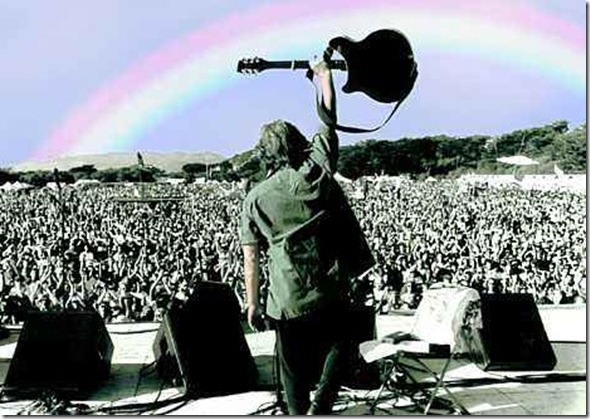





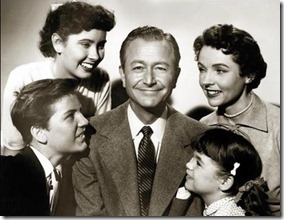























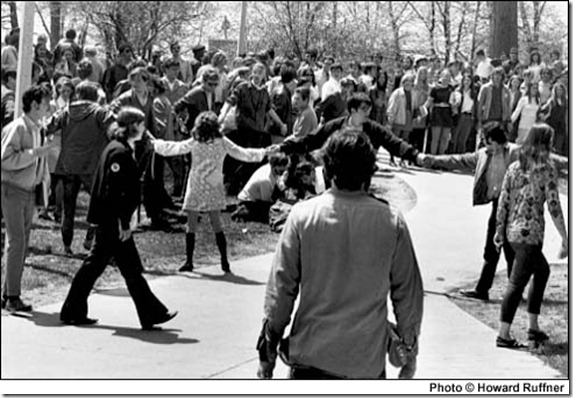















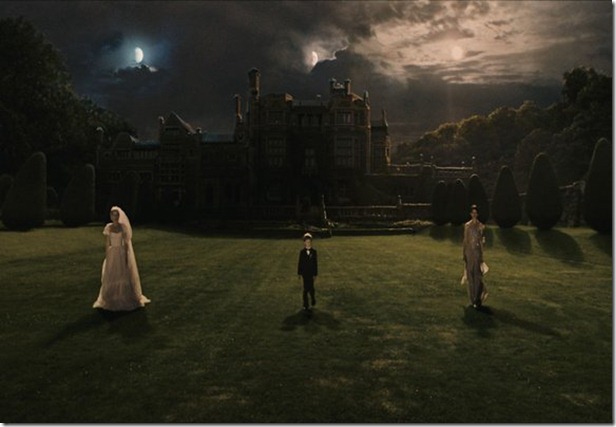










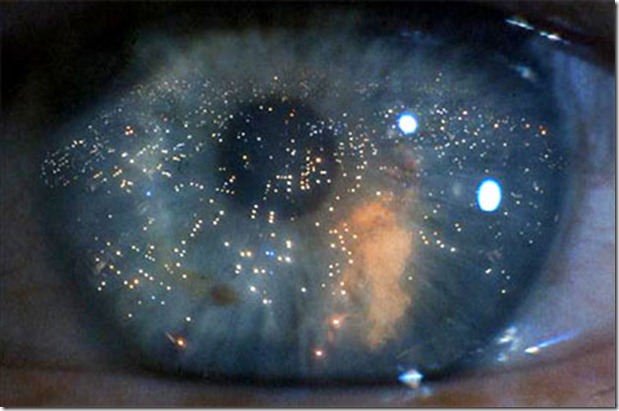
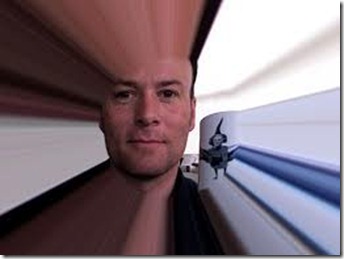

















































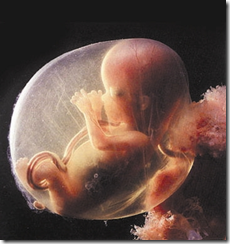






 At the point when the perinatal unconscious arises, individuals—and collectively, society—have the choice to turn toward the emergence of these feelings or to turn away from them.
At the point when the perinatal unconscious arises, individuals—and collectively, society—have the choice to turn toward the emergence of these feelings or to turn away from them.  In turning away from them we shun them, act them out, and are enslaved by them…thus we act unconsciously, trance-like, zombie-like.
In turning away from them we shun them, act them out, and are enslaved by them…thus we act unconsciously, trance-like, zombie-like.  Or the individual and society can avoid this going within—as depicted in the peace symbol—and choose instead to can act them out, which is the peace symbol upside down—the Satan symbol, the pentagram.
Or the individual and society can avoid this going within—as depicted in the peace symbol—and choose instead to can act them out, which is the peace symbol upside down—the Satan symbol, the pentagram. 





































